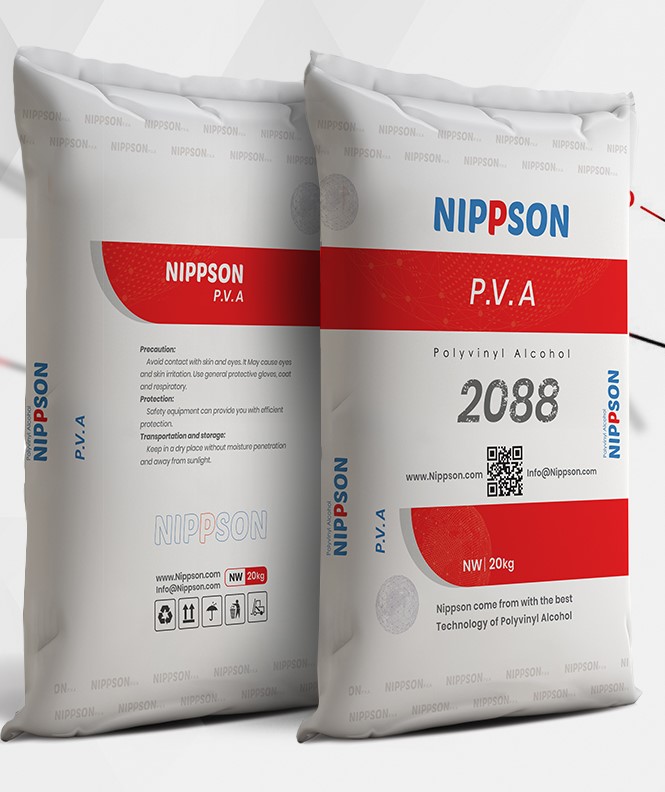Nippson has a long history in the development of polyvinyl alcohol (PVA ) based suspending agents, especially for the needs of PVC manufacturers. In these applications polyvinyl alcohol is used as a protective colloid for the polymerization of PVC: vinyl chloride monomer is suspended in water by means of stirring in combination with a suspending agent to allow the polymerization reaction to proceed. The physical properties of the resulting PVC, including size, shape of the grains and bulk density, are directly related to the grain forming process during polymerization.
Nippson’s primary and secondary suspending agents allow precise control of the grain formation and its resulting structure and morphology. Furthermore, the surface active performance can be widely optimised by selecting an appropriate combination of Nippson suspending agents. This diversity enables the PVC manufacturer to produce a very versatile range of PVC resins, varying in morphology and K value according to the intended end application.
Nippson’s primary and secondary suspending agents allow precise control of the grain formation and its resulting structure and morphology. Furthermore, the surface active performance can be widely optimised by selecting an appropriate combination of Nippson suspending agents. This diversity enables the PVC manufacturer to produce a very versatile range of PVC resins, varying in morphology and K value according to the intended end application.
NPA-series
Nippson’s polyvinyl alcohol based primary suspending agents (NPA-seriess) enable accurate control of the grain size distribution of the PVC resin. A high degree of uniformity from grain to grain as well as a narrow grain size distribution is required to avoid the formation of a coarse fraction that could give rise to fisheyes or other defects, and also make VCM (Vinyl Chloride Monomer) removal difficult.
PVC grains must be able to absorb a variety of compounding additives including plasticizers, lubricants and stabilisers to name just a few. For this purpose, PVC resin must have some degree of porosity that can be measured using cold plasticizer absorption (CPA).
Porosity in PVC grains is created by a complex series of interrelated steps in the formation and growth of a sub-microscopic structure within each droplet. It also depends on the unique nature of the VCM / PVC system.
electrical wiring in plastic conduit
materials used in medicine
Nippson’s secondary suspending agents (NPA-series) improve the porosity of systems. In addition to the porosity, the control of bulk density (BD) or apparent density (AD), which mainly depends on porosity, grain shape and grain size, is critical to the PVC processor, which is concerned with charge size, cycle times in high speed mixers, output rates, motor torque and degree of gel formation in extruders.
Nippson’s secondary suspending agents (NPA-series)are solid grades, which are self-dispersible in cold water. NPA-series can be charged directly into the reactor at any concentration as a dispersion.
Nippson’s secondary suspending agents (NPA-series)are solid grades, which are self-dispersible in cold water. NPA-series can be charged directly into the reactor at any concentration as a dispersion.

